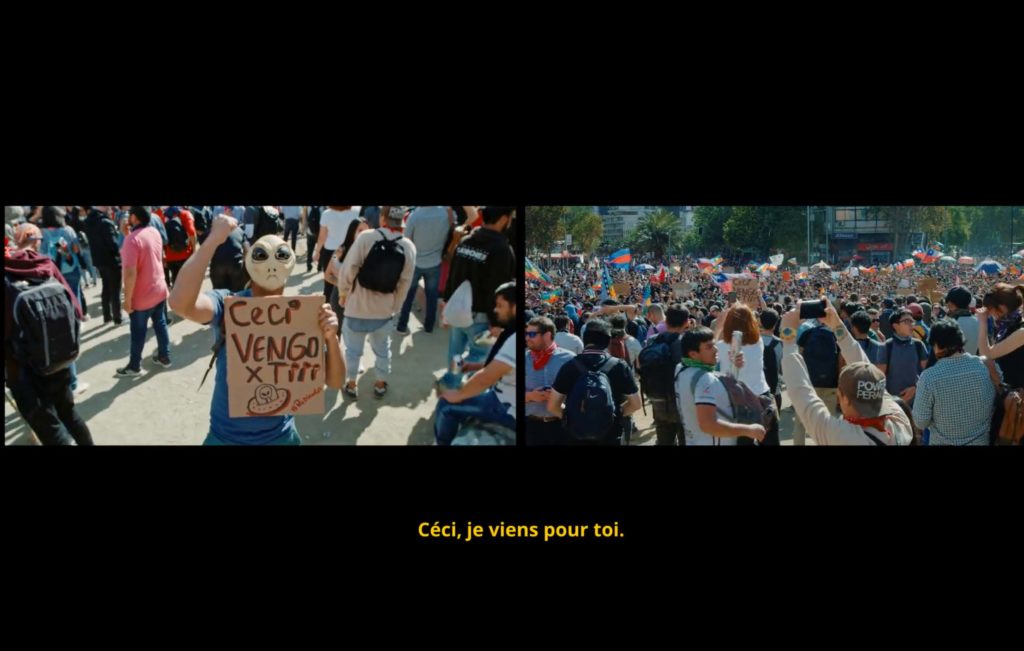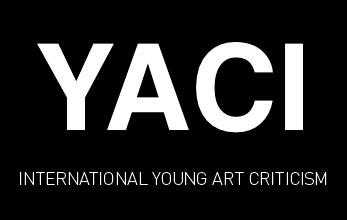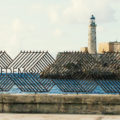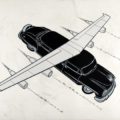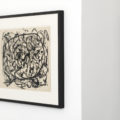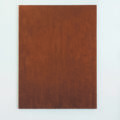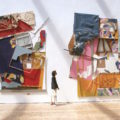Paz Corona facing the erotic of the future time. A conversation
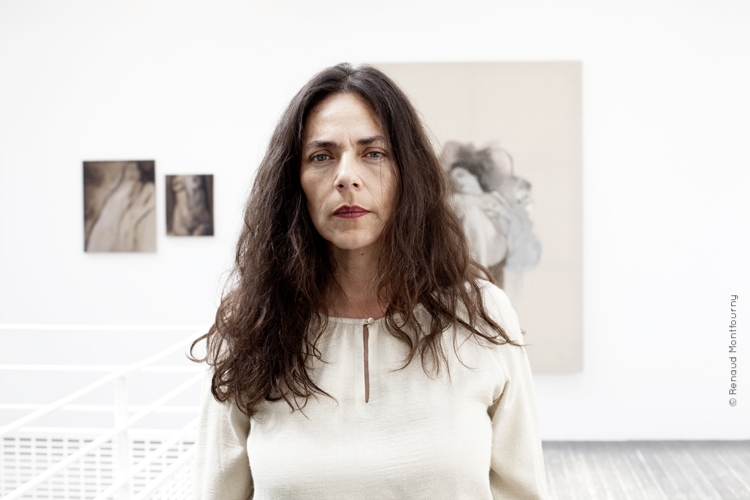
By Edgar Ariel
We are on rue Saint Gilles, in the third arrondissement of Paris. Paz Corona holds a bottle of water in her hands and watches me arrive at her exhibition at the Brownstone Foundation. She is here by chance. I am also here by chance. Dayneris Brito, who is advisor to the Cuban art collection at the Foundation, introduces us. Paz immediately recalls a piece I wrote about LO QUE VI CHILI 1973-2022 for Rialta Noticias and makes a point: “Dictatorships are mystifications”.
The French-Chilean artist is also a psychoanalyst. She is a member of the Freudian School and teaches at the Freudian College in Paris. She was born in Santiago de Chile in 1968, but at the age of five, right after the coup d’état against Salvador Allende in 1973, she emigrated to France with her family. Although she returned to the southern country on other occasions, it was not until forty-six years after that initiatory departure that she was able to register a mobilizing drive that reconciled her, in a way, with her nature as an exile.
LO QUE VI VI CHILI 1973-2022 produces in me a sensation that she herself has described when she assures that “time has gone out of its hinges”. The battering ram against the gates of the Alcazar.
Paz, it has been said that she returned to Chile after forty years. But I knew that he was in Santiago before. What is the truth?
The truth is that at some point I said that I had needed forty-six years to subjectify this disaster. When I arrived in Chile in 2019 it seemed to me that they too, the Chileans, had needed that time to do something with their history. But I returned to Chile in 2000 for the first time. It was my husband who wanted me to go to Chile because it seemed to him that I was missing something, that something had remained there.
Hadn’t you been back since 73?
Yes, I was afraid to go to Chile. In fact, it took me twenty-seven years to return.
And the fear? How did you live with the fear of returning?
For thirty years, approximately, I did not speak Spanish. I spoke French because I arrived in France when I was five years old and immediately adopted their language and culture. The French also adopted me. So, in a way, I protected myself. Fear gets in your body. I was a very shy, hidden child, I didn’t mix much with people. Afterwards I continued to be like that. Psychoanalysis helped me a lot to get out of where I put myself alone.
In what place did you put yourself alone? In what place, not only physically, but mentally? How could you describe that place?
A hiding place to disappear. That’s why the signifier “disappeared” matters a lot to me. I identified myself with that signifier. I disappeared from the public scene. That didn’t stop me from living, but it was my style: to be hidden.
The fact of hiding also made you, as you say, hide a mother tongue. You preferred not to speak Spanish as a protection system. Could that be?
Yes, but that’s not conscious. That happens. Because I also had another language at my disposal. But the Chilean issue always interested me a lot, although I kept it quiet. One day, about six or seven years ago, my children were recording me and my daughter asked me to tell her my memories of Chile.
What are those memories of Chile?
I told my children that my family was very involved in politics. In my house there were a lot of political meetings. There was a lot of talk about politics. It was the seventies.
You were three or four years old.
Yes, I was in that environment all day long.
Are you the only child?
No. I had an older sister who died here in France and I have two little sisters, one from my father and one from my mother.
But during your childhood it was just you and your older sister.
Luz and Paz.
How do you remember that moment of leaving Chile, if you remember it?
What I remember most is that moment called the Tanquetazo, in June of 1973. This was the first coup attempt. Then came September. Between June and September my family sent me to the countryside. There I stayed with the lady who took care of my mother’s house. That’s where I had my real childhood. That was very important for me. They gave me a breath. It was a long time before I could remember that freedom.
Then we went to Santiago. We stayed with my great-grandmother for a month. We didn’t know where my parents were. We couldn’t talk. That was very engraved in my body. We didn’t know if they were going to come looking for us. Those are the memories of Chile before we left.
The whole family left Chile in 73? All in September?
They took refuge very quickly. My grandmother and my mother worked at the Ministry of
Housing. One day my mother went to the house and the neighbor told her: “They are looking for you, you have to leave”. So she went to the French embassy. From the embassy they sent for my mother’s brothers, who were in the National Stadium, my father, who had gone underground, and my grandfather, who was imprisoned in northern Chile. Those two women did that.
You mentioned that psychoanalysis helped you a lot to reconstruct a becoming that is in your body. How could you explain that through psychoanalysis you build artistic devices?
I was always hiding behind my sister. I had almost no name or identity because we were a unit. It was very difficult for me when she died. I was very identified with her. It was very hard for me to disidentify myself and to deal with guilt. But one day I dreamed of my face.
That made me want to paint it.
I started painting portraits. Mine, my sister’s and my children. Until now I’m painting people I don’t know. It was my way of cutting off and separating myself from something that had put me in the shadows. When my children asked me that question, I realized that I felt like, for the first time, going to Chile to see something. So I decided, by chance, to go in October 2019.
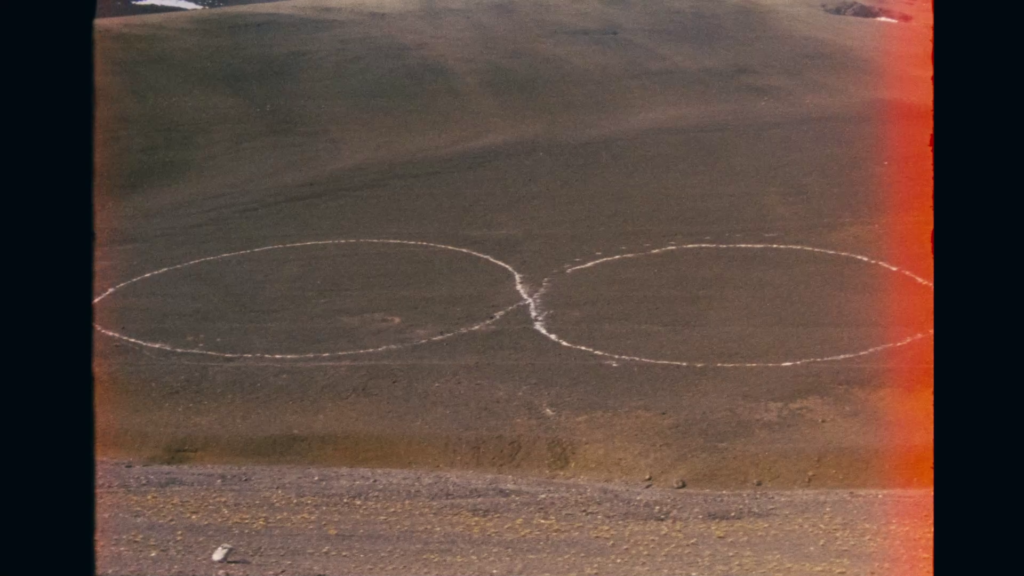
You have mentioned the word “disappeared” several times. I would like to rescue one of the video installations that are part of LO QUE VI… which is called Atacama. Atacama is a very abject territory, very sensitive for Chileans because it is a desert, a place where many people disappeared during the dictatorship.
About 1,200 people are still missing.
Did you go there with the predetermined idea of going there?
Yes. In 2009 I read in a newspaper this headline: “The desert disappeared”. I thought: “a disaster can bring, in a contingent way, poetry”. I knew that Atacama was the last destination of the disappeared. That year the El Niño phenomenon had reached the Chilean coasts and the rains had caused the ores to appear in the desert. I kept that idea, a bit strange, for ten years. When I made up my mind, I said: “I’m going to make that film there”. There were no flowers, but something else had bloomed.
A poetry had blossomed in you that turned into the video installation. I would like you to comment on the sign of infinity that you traced on the desert. For Paz Corona, what is infinity?
Yes, it is the sign of infinity, but above all, for me, it is the Möbius strip. On a plane you see the sign of infinity, but when you unfold it in three dimensions the lines are not cut. That shows that we are not in the same dimension. What’s very interesting to me about that shape is that it says a lot about the story. Yes, of course, there are twists and turns, but you can move to another place, as happened in Chile in 2019.
You can and you should. It is part of life to move on to other places. That is what happens with dictatorial systems, which do not allow you to go elsewhere. How do you understand dictatorships?
I think dictatorships are mystifications. They are terrible, of course. In a dictatorship, violence embraces everything. Fear is everywhere. What happens in a dictatorship is that the law is not respected. The authority invents the law. Without different points of view you don’t go anywhere, you only get to repression.
When I see a video installation like Santiago 1973-2019 I feel, because I come from a very dictatorial territory like Cuba, that this film and this energy have many points of contact with other Latin American societies.
Not only with Latin American societies. Today we are in a polarization between those who want to defend democracy and others who persist in authoritarian states. We can see it in many places in the world. What I think is that it is not convenient for many people for that to happen, for the people to ask for more democracy. It is not in the interest of unethical companies. It doesn’t suit many states that base their politics on economics. Everything can be gone in a second. What I saw in Chile was the army taking power and silencing the counter-powers.
Next to Atacama and Santiago… you have placed an island. It is a physical island, because it exists, but in the exhibition it is also symbolic: Nero. That static image, that infinite plane, in loop, captures a rotten wood. Do you think that in the heart of these societies what is there is that, a rotten trunk?
I really like what you say because everyone sees what they can see. Nero is an island, yes, in Greece. I never had a small town to go back to. That’s why I invented a little town that was that island.
Maybe what you mean is that you invented a homeland.
Yes, a place where I could exist. That island took me in. I was making a film with my children called Nero. “Nero” means “water” in Greek. I told them, “Now let’s go and see the tree where they played when they were kids”. It was a very big tree. A fig tree. When we arrived, the tree had fallen down because of a hurricane.
We saw that fallen tree. For us it was tremendous. Throughout my children’s childhood we had played there. We could see the hole where it was planted and what was left of the wood. In LO QUE VI VI… you can see that unique image that for me is a movie. In addition to the fallen tree we can see the shadow of other trees that move and give life to that image. That is in Greece, the place where that strange concept of “democracy” was imagined.
You see it as rotten wood, but I don’t. I see something that moves. I see something that moves. The idea of rebirth is also evident with these ceramic ores that accompany the three video creations.
It was the flowers, in 2009, that showed me the way to Chile.
They are flowers with an oriental tradition.
Yes, I made them in China, in Jingdezhen. I am very interested in taking from tradition and giving back something different, an invention.
How many flowers did you make in China?
1500. The fragility becomes very hard.
That has to do with what I felt when I entered the gallery. It was like swimming. It was like inhabiting a watery space. It was like a river that transports me through a memory. It was an immersive experience in memory. That, precisely, comes from that image, from the ores on the water: water lilies.
Yes, but here it’s not only about memory…
It’s about the present.
Exactly.
The memory of the present.
Time has an eroticism that is not linear. What I do has its origin in mourning, but for me it is a way to separate myself from that history and to visit it, again, with what I know. What I know is that, going through the unconscious, I reorganized the memory. I speak for the future.
